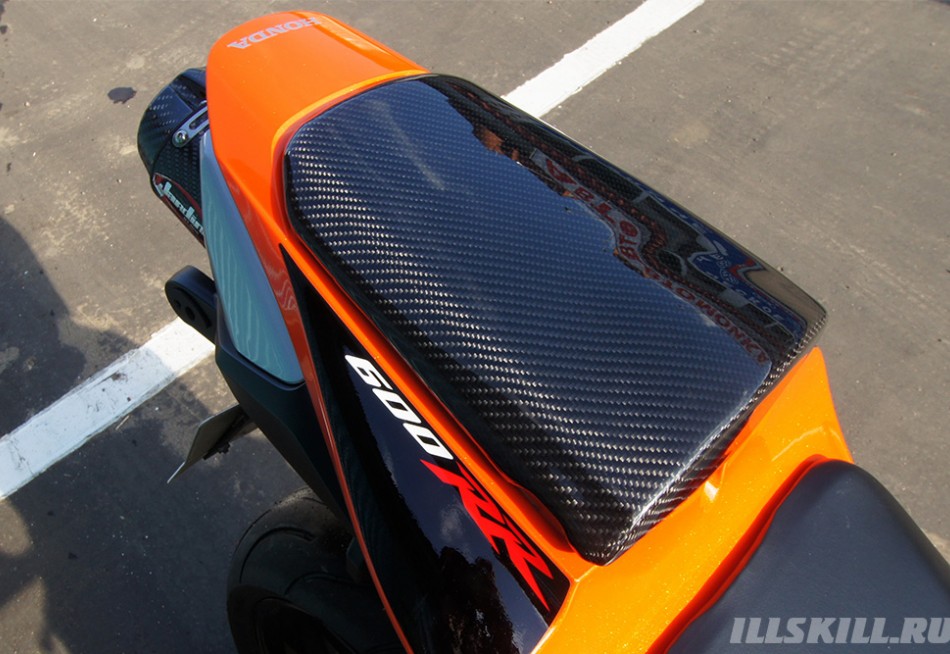Download the MP3 audio version of this story here. The Explainer now has its own free daily podcast; click here to learn more.
Battling the benzene An explosion at a Chinese chemical plant two weeks ago spilled a 50-mile slick of benzene into the Songhua River, which provides drinking water for the city of Harbin. After the accident, the Chinese government made plans to ship 1,000 tons of activated carbon to the city’s water treatment facilities and to dump more carbon straight into the river. Russian authorities—who expect the pollution to reach the city of Khabarovsk within the next few weeks—are shipping 50 tons of activated carbon to local treatment plants.
How can activated carbon clean up a spill?
Through adsorption. Carbon has a natural affinity for organic pollutants like benzene, which bind to its surface. If you “activate” carbon—by steaming it at 1,800 degrees, for example—it forms little pores and pockets that increase its surface area. (It’s said that a teaspoon of activated carbon has the area of a football field.) Pesticides, chloroform, and other contaminants slide into the holes of this honeycomb and hold fast.
Municipal water treatment plants generally use activated carbon in two ways. They either run water through carbon filters—a bit like the ones you might have on your faucet or in your Brita—or they pass it over a bed of carbon.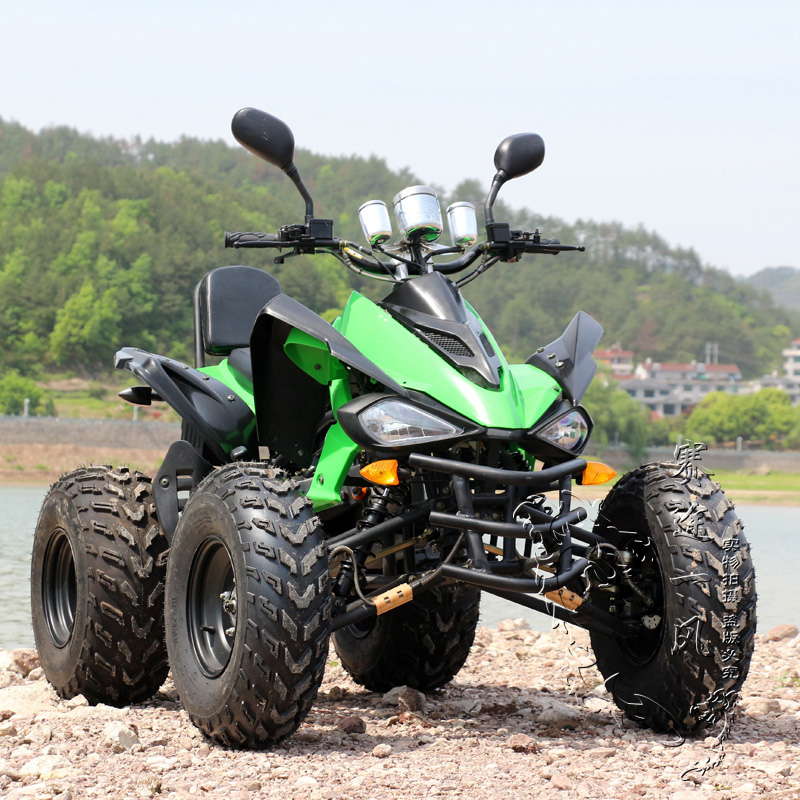 Either way, no carbon remains in the water once it’s been thoroughly treated. (The carbon that the Chinese government dumped directly in the river was likely intended to pick up benzene from the surface of the slick; in a case like this, carbon is usually skimmed off the surface once it’s adsorbed as much as it can.) How much pollution gets sucked up by the carbon depends on a number of factors, including the temperature and acidity of the water, the type and amount of pollution, and the amount of time the water spends in contact with the carbon.
Either way, no carbon remains in the water once it’s been thoroughly treated. (The carbon that the Chinese government dumped directly in the river was likely intended to pick up benzene from the surface of the slick; in a case like this, carbon is usually skimmed off the surface once it’s adsorbed as much as it can.) How much pollution gets sucked up by the carbon depends on a number of factors, including the temperature and acidity of the water, the type and amount of pollution, and the amount of time the water spends in contact with the carbon.
The kind of carbon you use also makes a difference. Some manufacturers produce as many as 150 types of activated carbon, which differ in characteristics like density and pore size. (It also comes in powdered, granulated, and pellet forms.) Which kind you use depends on what you’re using it for: A carbon with large holes would be best at picking up heavy organic chemicals, while smaller pores would catch the lighter pollutants. Different types of carbon can be activated in different ways or they can come from different source materials. Some are made from coal, wood, or sawdust, while others are made from peach pits, olive pits, or coconut shells. Manufacturers rate their products according to how much they can adsorb. The “molasses number,” for example, tells you how well they adsorb the dark color from a mixture of water and molasses.
Different types of carbon can be activated in different ways or they can come from different source materials. Some are made from coal, wood, or sawdust, while others are made from peach pits, olive pits, or coconut shells. Manufacturers rate their products according to how much they can adsorb. The “molasses number,” for example, tells you how well they adsorb the dark color from a mixture of water and molasses.
The water treatment plants in China and Russia will need as much carbon as they can get to soak up all the benzene on the river. Activated carbon can only be used until its pores fill up—which is why you have to change the filter in your Brita from time to time. It could take 1,000 tons of carbon to adsorb the 100 tons of benzene that spilled two weeks ago.
Got a question about today’s news? Ask the Explainer.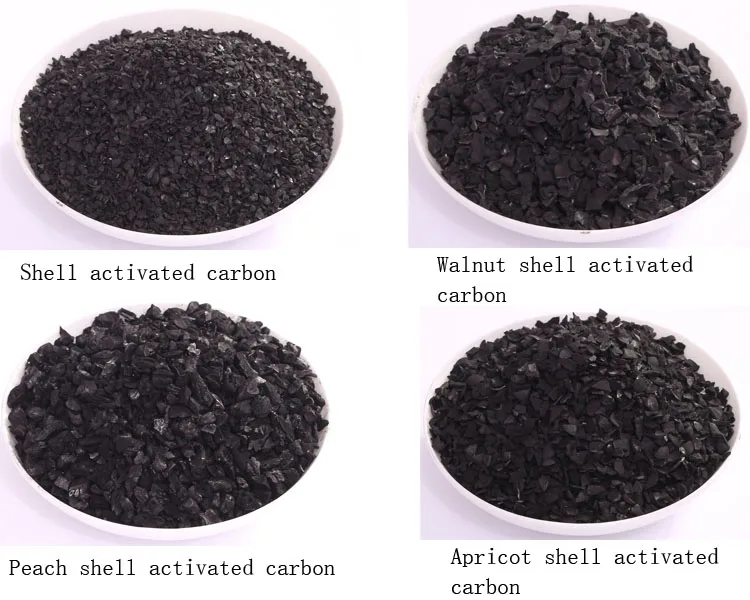
Explainer thanks Peter Censky of the Water Quality Association and Ed Habayeb of General Electric.
For better looking and tasting cannabis extracts, using color remediation technology can help transform cannabis oil of any quality into a lighter-colored and tastier product. One of the most popular and effective types of filter media used by oil processors is activated carbon.
Activated carbon, also known as activated charcoal, is an extremely efficient filter media used to remove the dark color from extracts. Other common filter media include fine powders such as diatomaceous earth and activated bentonite clay, all of which can remove undesirables from the cannabis extract.
Activated charcoal is one of the most widely used filtration materials across a broad range of industries, not just botanical extraction. In fact, there are over 2,500 commercial product applications for this versatile form of carbon.
In fact, there are over 2,500 commercial product applications for this versatile form of carbon.
Across the board, activated charcoal is used to help in the removal of toxins in a variety of substances. Industrial applications include, but are not limited to:
Drinking water filtration
Precious metal recovery
Air and gas filtration
Animal feed additive
Chemical analysis
In short, activated charcoal has powerful purifying characteristics capable of trapping contaminants from a broad range of substances, including liquids and gases.
Activated charcoal is made from a variety of source materials containing a high level of carbon including:
Bamboo
Coconut husk
Wood
Willow peat
Coir
Lignite
Coal
Petroleum pitch
In its normal form, carbon is porous, but a high-tech manufacturing technique can physically or chemically activate the carbon to produce a significantly more porous material with an impressive surface area. Activated charcoal has a surface area of over 21,000 square feet!
Activated charcoal has a surface area of over 21,000 square feet!
In its activated form, carbon is mind-bogglingly porous. A network of micropores provides an abundance of bonding sites that attract certain compounds like a magnet. In a process known as adsorption, activated charcoal holds organic compounds from gas or liquids within these pores.
Adsorption, not to be confused with absorption, allows the undesirable compounds to stick to the surface of the activated charcoal within its pores. In contrast, absorption occurs when a substance completely enters the volume of another substance, like a sponge.
However, activated charcoal will not aid in the removal of every contaminant alone and will become less efficient with every subsequent purification.
Eventually, the active sites in the charcoal become full, thereby, the filter media purifies fewer undesirables over time. In effect, the filter media must be replaced to maintain a high level of filtration.
In cannabis color remediation, activated charcoal can adsorb a wide range of undesirable particles from the extract including pigments, odors, and other contaminants. Activated charcoal can remove chlorophyll and other unwanted pigments to create high-clarity extracts.
Activated charcoal can remove chlorophyll and other unwanted pigments to create high-clarity extracts.
In commercial color remediation, activated charcoal is used after the initial extraction process to remove chlorophyll and other pigments from the crude extract. Essentially, the carbon is used to polish the crude oil to improve its quality.
Extraction technicians may use a carefully vetted lineup of filter media within a color remediation column (CRC) as part of their post-processing workflow. The CRC step fits between the extraction and recovery column.
Popular filter media pairings alongside carbon filters include silica gel, activated bleaching earth, or bentonite clay. Operators strategically stack the media into the CRC in a layered fashion allowing different impurities to be filtered in a certain order.
Activated carbon can come in multiple forms including black and odorless powders and granules, which can be packed inside the CRC.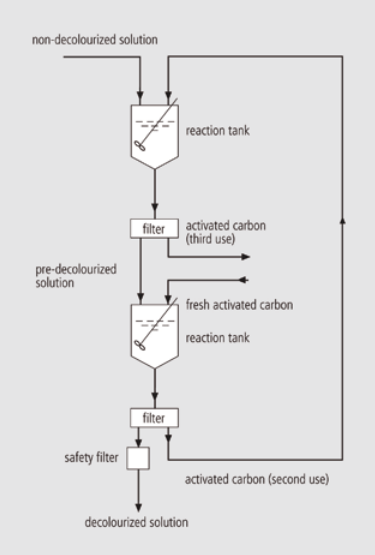
When handling loose carbon, processors are recommended to wear the proper personal protective equipment (PPE) including safety glasses, protective gloves, lab coats or overalls, and respiratory protection.
When using activated carbon, the workroom should have sufficient air exchange and/or exhaust for proper ventilation and to avoid dust formation during loading and unloading.
As an alternative, carbon-impregnated filter modules can streamline the handling of carbon and reduce hazards associated with powdered carbon. Compared to loose carbon, the immobilized activated carbon results in a forced contact of the undesirable particles allowing for shorter contact time and less carbon material required.
As the cannabis extract passes through the packed CRC, undesirables like chlorophyll become trapped in the pores of the carbon, thereby, reducing the dark color. In the end, processors produce a clearer final product with a better taste compared to one without color remediation.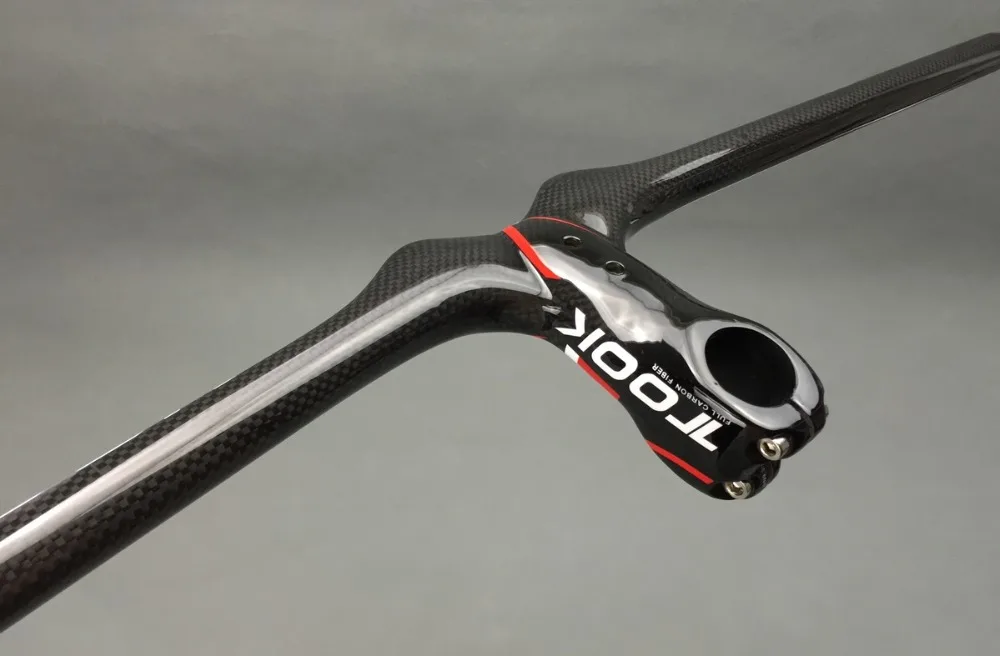
During the cannabis oil extraction process, the efficacy of the carbon depends on several factors, including the following:
Plant material
Solvent used
Surface area
Pore size
Pore distribution
Carbon source
Activated carbon type
Manufacturing process
pH
Temperature
Concentration of contaminant
Contact time/flow rate
Frequency of use
Generally, lower pH levels and temperatures increase the adsorption capacity of the carbon material. In addition, chlorophyll and other undesirable particles are removed more effectively if they have a longer contact time with the carbon.
Carbon is an incredible filter media for a variety of extraction processes, but particularly ethanol extraction. During the ethanol extraction process, ethanol can extract a greater amount of pigments and waxes than other extraction methods such as BHO extraction.
During the ethanol extraction process, ethanol can extract a greater amount of pigments and waxes than other extraction methods such as BHO extraction.
For example, in the production of CBD oil from hemp biomass, this filter media can be used to filter the excess pigments that produce a green tint to the oil. Beyond its remediating effects for ethanol extraction, carbon has many advantages and minimal disadvantages.
Produces a better-tasting cannabis oil
Removes colors, and other undesirables
Affordable material for large-scale use
Readily-accessible material
Large surface area
Must be replaced; frequency depends on the application
Will not remove every unwanted compound
Slow filtration
May adsorb cannabinoids (reduce potency) and excess terpenes (reduce nuance)
May reduce yield
Heavy metals may end up in the extract
Interested in trying our filter media? We would love to send you some! Browse our products, then fill out this form and someone from our team will be in touch to finalize your request.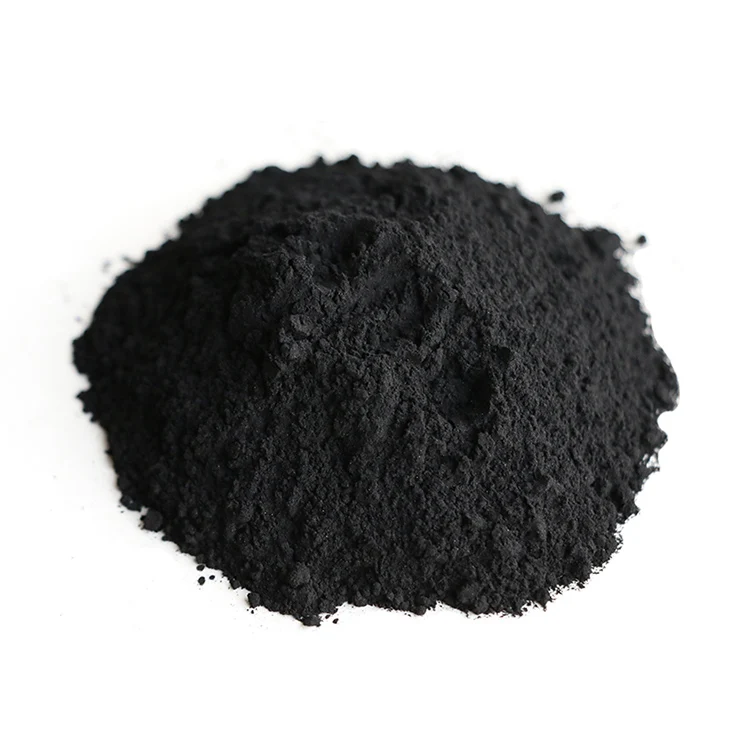
Let's Do It
While carbon is very effective at removing chlorophyll and other non-active pigments, it can also remove active compounds such as cannabinoids and terpenes. Lowering the THC and CBD content, as well as the level of terpenes in the oils reduces potency and yield of the extract.
In addition, its ash content contains heavy metals that degrade with every use. Unfortunately, the metals can seep into the extract as microscopic particles. Even with filtration, some particles may end up in the final product.
High-quality activated carbon can overcome many of these common challenges when it is used to remove pigments. Carbon materials can be treated to prevent leaching into the extract. Reusable carbon alternatives can significantly improve any extraction process.
In the search for the perfect filter media type for color remediation of cannabis extracts, Media Bros stands out with its innovative line of high-flow filter media for BHO and CO2 extraction equipment.
Made from naturally-occurring zeolites, Media Bros’ filter media have a high adsorption capacity that rivals any natural adsorbent known to mankind.
Capable of handling high flow rates.
Safe to use.
Easy to handle.
No baking, preparing, or packing required.
Creates high-quality and high-clarity extracts with better color and taste
CRX, CRY, and CR2 are quickly becoming the standard, ready-to-go solutions for color remediation for inline BHO and CO2 extraction. Level up your color remediation game and clarify dark brown and green extracts with ultra-adsorbent filter media from Media Bros.
Articles
02 Dec
Any wheeled vehicle - from a bicycle to a multi-ton truck - has a transmission in its device: a system that transmits rotation from the engine to the wheels. The operation of the transmission - and therefore the speed of travel - can be controlled by shifting gears.
The operation of the transmission - and therefore the speed of travel - can be controlled by shifting gears.
Gear shifting is organized differently in each mode of transport. In the article below, we will tell you exactly how to shift gears on ATVs, and what gearboxes are found on such equipment.
Gearboxes for ATVs can be of two types:

Rare and mostly found in older models, but other variations can be found. For example - "automatic" with the ability to manually shift gears.
Manual ATVs are a little more difficult to drive (at least at first, until you get used to it), but you can more accurately select the appropriate mode. And vice versa: CVT "boxes" are much easier to operate, they are easy to master for a beginner who gets behind the wheel of an ATV for the first time. But on the other hand, with active driving along a route with variable difficulty, riding a CVT will be a little less convenient.
For example: you are driving on a flat packed dirt road on H and you see a large stretch of muddy road ahead with deep mud (or a steep hill, or bumps, or stones). You will have to come to a complete stop and shift to L, drive through mud, and when you get back on a dry road, come to a complete stop again and shift back to H. , like motorcycles, and a manual clutch lever on the handlebar on the left.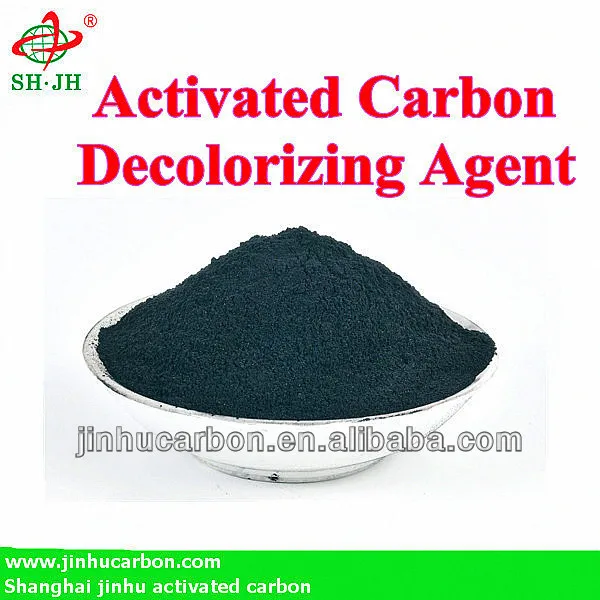
The foot lever device can be of two types:
The shift itself is carried out in the same way as on motorcycles:
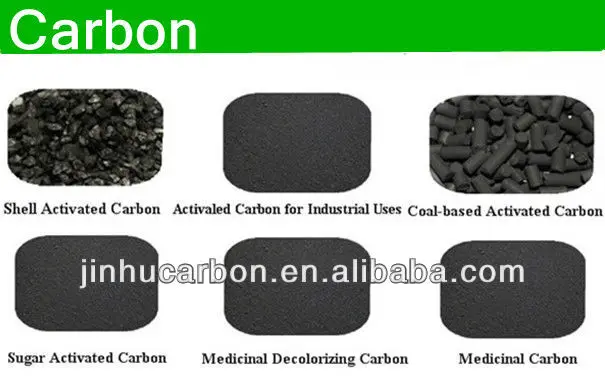 If you have experience driving any vehicle with a manual transmission, you will quickly get used to an ATV with such a gearbox.
If you have experience driving any vehicle with a manual transmission, you will quickly get used to an ATV with such a gearbox. When exactly to switch speeds up and down is determined by the tachometer, speed, road complexity, weight of the load taken and the characteristics of the ATV itself (power, weight).
CVT gearboxes are much more common on ATVs. The clutch in them does not need to be squeezed out, and the “mode” of driving forward is selected from two (most often) options: in high (suitable for driving on an easy route) or in low (for difficult sections, steep climbs and towing) gears.
An important difference from driving in a manual transmission: switching between L and H is carried out only when the ATV is completely stopped, with the brake applied. To select a mode, move the knob to the desired position. Switching between L and H on the go is impossible.
The rest of the gears - park, neutral and reverse - of course, are also included when the ATV is standing still.
CF MOTO ATVs are fun, interesting and very convenient to use on the farm these small ATVs combine increased flotation and reliability, decent speed and power. Driving a quad bike is really easy and those who got into classes with an instructor are convinced of this rather quickly. However, if you couldn't find someone who would give you a couple of first lessons, we hope this article will help you start your acquaintance with ATVs with pleasant moments.
If you have absolutely no driving skills when looking at any device, you can get confused by the abundance of all kinds of screens, buttons, pimpochki however, do not worry fast enough, you will not only understand why they are needed but also use them confidently, but until this happens , carefully study the instructions for your ATV to find out where and what is located on it. You need to understand the location of the main controls on the ATV and understand how its main systems work, which can help if you suddenly get stuck with a broken ATV far from home, however, if you do not have technical talents, and even more so if you have them, the best way out is nevertheless will call for help, although it would not hurt to check in what position the engine start button is also choosing the ATV correctly. This is not the device that should be inherited from the grandfather. The quad bike is chosen exactly for you. You should be comfortable in the saddle and all the levers are well accessible when riding. A powerful large ATV can be very difficult to manage, especially if you are new to this business, but you should not buy too small a model. Knees resting on the steering wheel do not add confidence to the driver.
You need to understand the location of the main controls on the ATV and understand how its main systems work, which can help if you suddenly get stuck with a broken ATV far from home, however, if you do not have technical talents, and even more so if you have them, the best way out is nevertheless will call for help, although it would not hurt to check in what position the engine start button is also choosing the ATV correctly. This is not the device that should be inherited from the grandfather. The quad bike is chosen exactly for you. You should be comfortable in the saddle and all the levers are well accessible when riding. A powerful large ATV can be very difficult to manage, especially if you are new to this business, but you should not buy too small a model. Knees resting on the steering wheel do not add confidence to the driver.
By the way, the book that comes with the quad bike can be very useful if, according to the old Russian habit, you still refer to the instructions when the fantasy is over, you risk losing the quad bike sooner than you think, but this is quite an expensive toy.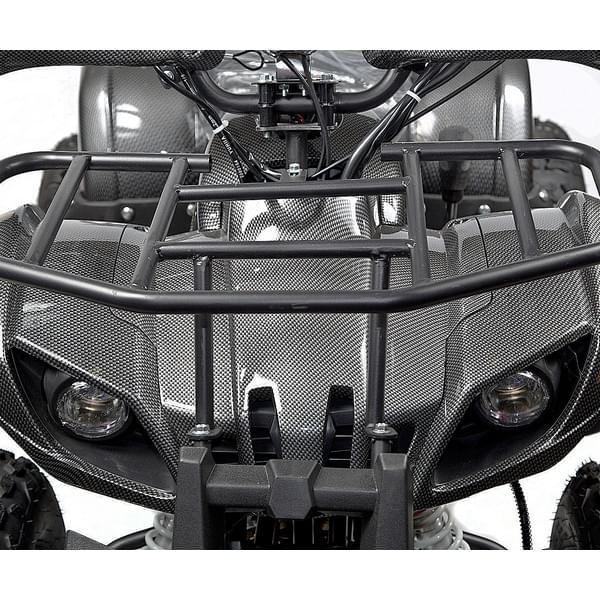
Do not ride an ATV without the necessary equipment, a helmet is required when riding. Even if he spoils your hair, this is still not enough reason to be left without a head. Without a head, the hairstyle is almost useless. Clothing should be tight and with long sleeves and trousers, this allows you to save a lot on greens. Now about how to get on the road.
Putting the gear in neutral, and the ATV on the parking brake, we sit in the saddle. We turn on the ignition and, realizing that nothing is happening, we remember the parking brake. Squeeze the brakes until the quad comes off it and shift into first gear if you can't find it, then your quad has an automatic transmission and will do everything for you. Now you can add gas to finally start moving. Upshifting occurs when the engine has enough revs, but don't rush into it. The first few rides should be introductory so that you get an idea of how the quad behaves in response to your actions. And it is better to move at this time on flat surfaces.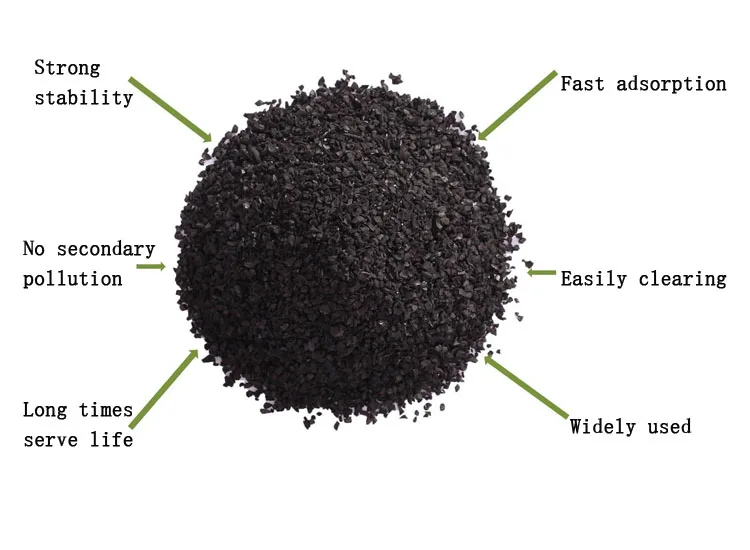 Until you learn how to drive an ATV.
Until you learn how to drive an ATV.
To stop, you need to release the gas and wait until the ATV stops moving, apply the parking brake.
Now a little about the ignition process itself.
Most modern ATVs are equipped with an electric starter, in this case there are no problems with ignition, just turn the key in the lock and add gas. But some models are still equipped only with a kick start, however, learning how to use it is not bad, and for those who drive a modern model, anything can happen.
First, check that there is enough fuel in the tank, because no one wants to waste their efforts in vain. Turn the key to the “on” position, turn on the ignition toggle switch on the panel.
The speed should be in neutral, if it is not, depress the clutch and move the lever to neutral. In this position, the light on the panel lights up and the ATV moves easily. This is a test in case you do not know where the neutral gear is located.
air will help it ignite faster.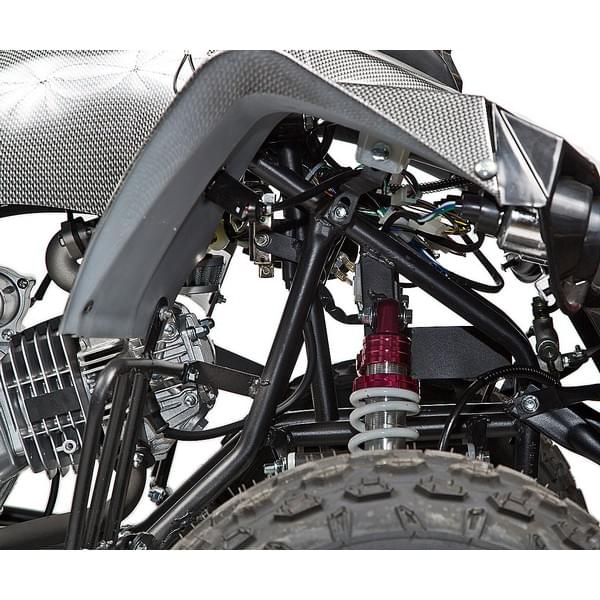 ATV already warmed up can be started immediately.
ATV already warmed up can be started immediately.
If your ATV is equipped with an electric starter, which is available on many models of ATVs, for example Suzuki, you just need to press the starter button and wait until the engine starts. If there is no electric start or it does not work, sit on the ATV and press the starter until the engine starts. In any case, you need to squeeze the gas so that gasoline begins to flow into the engine. Once the ATV has started, close the choke and you're good to go. For a physically unprepared driver, any trip on an ATV is quite a heavy load. That is why before getting into the saddle it would not be bad to warm up a little. Warmed muscles and joints merge into the desired rhythm much faster and more easily endure stress.
If you are not feeling very well, it is best not to travel, however, in any case, tell someone where you are going and in what area to look for you. On a trip, just in case, take your documents with you - at least a driver's license.